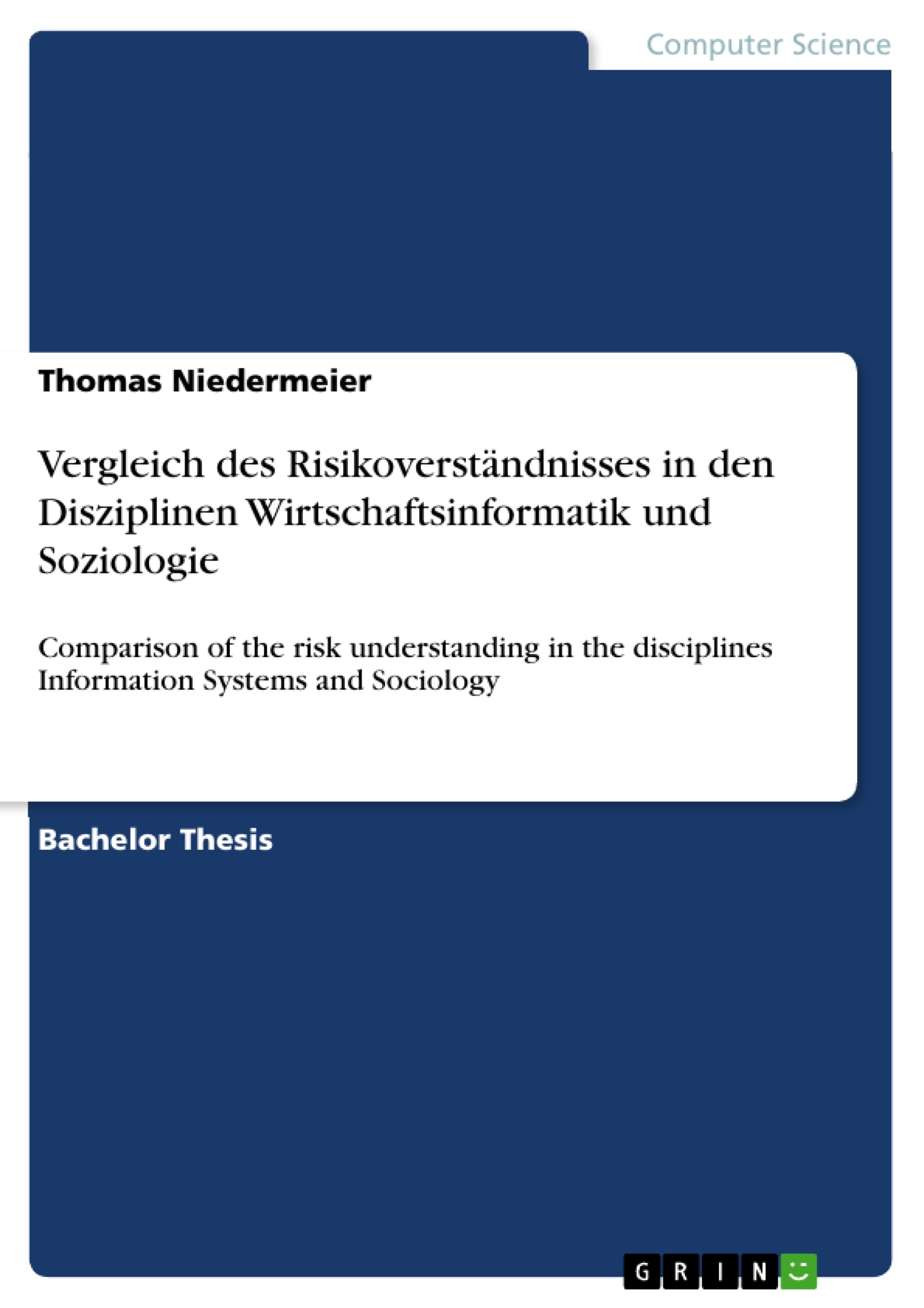In the sociology of risk, there are two different fields of research: risk objectivism and risk constructivism. The former deals with the actual increase of danger due to greater pressures through new technologies. Risk constructivism deals with the conception, perception and evaluation of risks in the social environment. Beck is a representative of objectivism. In his view, risk is produced by modern society itself. New risks are constantly emerging as a result of technological progress. This means that humans create their own risk environment and must now deal with it. Luhmann sees risk from a systems theory perspective. A social system is a process of social interactions between acting entities. According to Luhmann, risk only arises when there is communication about it. Furthermore, Luhmann sees the distinction between risk and safety as misleading and illusory. He proposes the concept of risk and danger. Douglas and Wildavsky represent neither an objective nor constructive notion of risk. They see risk as a collective construct that is shaped by the social context of the respective actors. The perception of risk is a social process. With the help of the grid-group model, a society can be divided into four cultural forms with specific risk-related characteristics. The cultural forms are individualism, hierarchy, fatalism and egalitarianism. The understanding of risk in information systems is analyzed based on software project management and IT security. The challenge in software development is to find the best position between costs and performances in order to satisfy both internal and external stakeholders. This is attempted with four approaches to risk management: risk checklists, an analysis framework, process models and risk response strategies. In this connection, it‘s worth noting that risks are perceived differently. Different risk assessments arise in various countries and different management levels. In the area of IT security, the ranking of risks varies in different countries. This difference in ranking can be explained with the help of the technology threat avoidance theory. The evaluation of the consequences and information plays a role in countering the threat. There are also two sociological components. The first is the informal influence. ―Informal‖ is the quantity of information that makes its environment available. The second, ―normative‖ influence deals with social norms and demands that are used to counter the risk.
Inhaltsverzeichnis (Table of Contents)
- Introduction and Organization
- Understanding of Risk in Sociology
- The concept of risk society from Ulrich Beck
- Risk as a Collective Construct from the Culture
- Risk in the Context of Communications and Systems Theory from Luhmann
- Risk and Govermantiality
- Risks in Information Systems
- Risks in Software Project Management
- Definition of Project, Project Risks and Some Categorization
- Management Understanding of Risk and their Limitation
- Risk Management in Software Projects
- Effect of Coordination and Uncertainty on Software Project Performance
- Risk Categories and their Effect on Product and Process Performance
- Critical Risks in Outsourced IT projects
- Risk Factors, Categories and their Observance
- Contingency Model of Software Project Risk Management
- Risk Perception and Risk Propensity on the Decision to Continue a Project
- Risks in the Field of IT Security
- Development and Progress of IT Security: From Past to Present
- Categorization of IT Security Threats
- Ranking and Perception of IT Threats
- Risk Perception: The Technology Threat Avoidance Theory
- Risk Perception Amongst Managers
- User Participation in IS Security Risk Management
- IT Security From an Entrepreneurial Standpoint
- Differences in Computer Ethics
- Risks in Software Project Management
- Comparison of Risk understanding in Information Systems and Sociology
- Comparison of Risk Characteristics
- The Culture Theory in Information Systems
- Risk Perception, Risk Environment and Risk Transformation
- Discussion and Outlook
Zielsetzung und Themenschwerpunkte (Objectives and Key Themes)
This thesis aims to compare the understanding of risk in the disciplines of Information Systems and Sociology. The main objective is to identify similarities and differences in the perception and management of risk within these fields.- The development and application of risk theories in Sociology and Information Systems
- The influence of social and cultural factors on risk perception and management
- The role of technology and technological development in shaping risk perceptions
- The relationship between risk management practices and organizational culture
- The importance of communication and coordination in managing risk within organizations and societies
Zusammenfassung der Kapitel (Chapter Summaries)
- Introduction and Organization: This chapter provides an introduction to the thesis, outlining the research objectives and the structure of the work.
- Understanding of Risk in Sociology: This chapter explores different sociological perspectives on risk, examining key theories and concepts from prominent scholars like Ulrich Beck, Niklas Luhmann, and Mary Douglas.
- Risks in Information Systems: This chapter focuses on the understanding of risk within the field of Information Systems, specifically examining risks in software project management and IT security. It analyzes various risk management approaches, threat models, and the role of organizational culture in risk perception.
Schlüsselwörter (Keywords)
The main keywords and focus topics of this thesis include risk sociology, risk management, IT security, software project management, cultural theory, risk perception, risk environment, and risk transformation. These terms represent the core concepts and research areas explored in the work.- Quote paper
- Thomas Niedermeier (Author), 2010, Vergleich des Risikoverständnisses in den Disziplinen Wirtschaftsinformatik und Soziologie, Munich, GRIN Verlag, https://www.grin.com/document/162186



